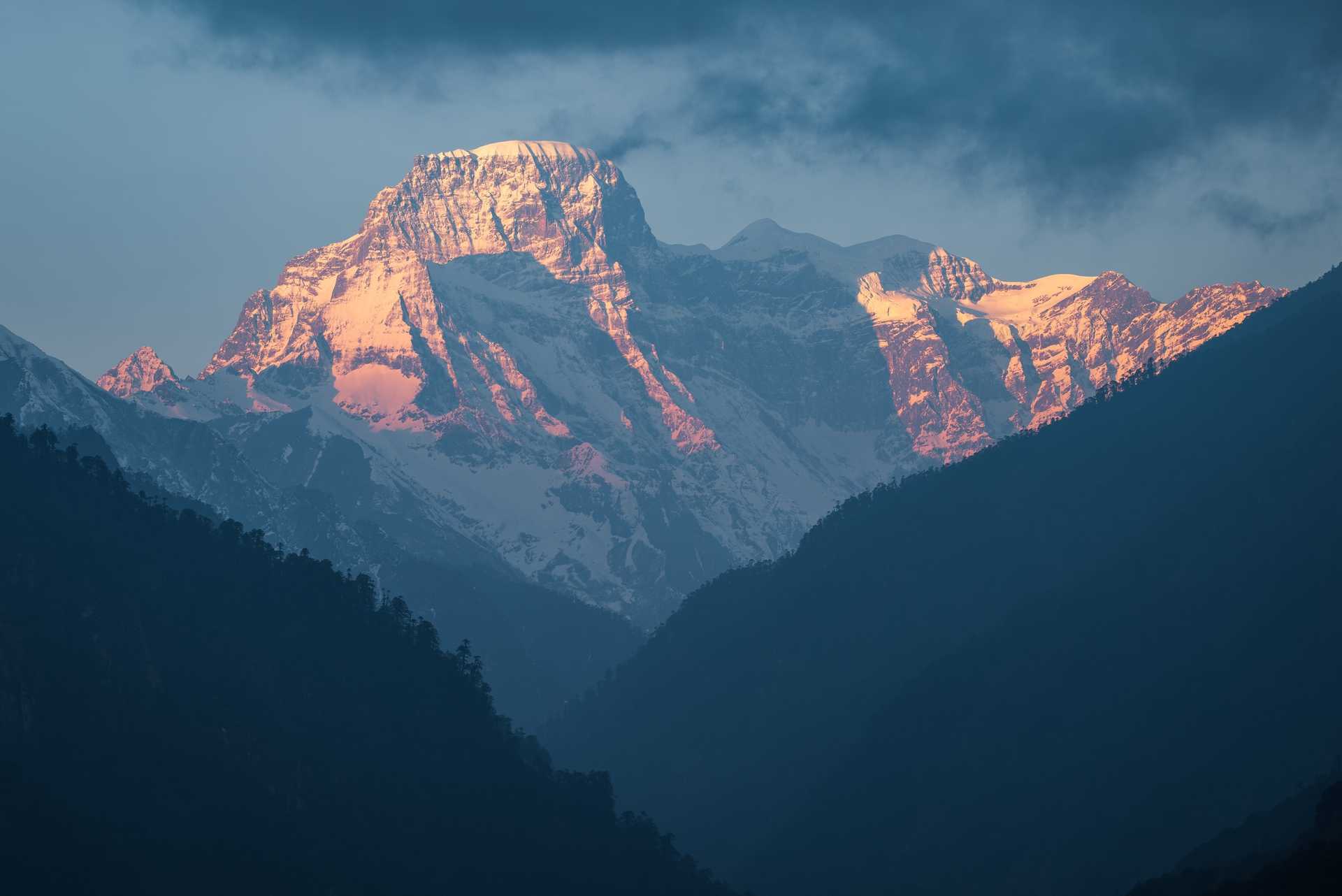Discover the Hidden Treks of the Himalayas
The History of the Himalayas
Located in Asia, the formation of the Himalayan Mountain range began approximately 50 million years ago when, due to tectonic plate movement, the large land masses of India and Eurasia collided. Due to the similar rock density of each landmass, land was forced upwards creating a jagged spine of towering mountains known as the Himalayas. Running for a vast 2,400km and spanning five countries of Nepal, China, Pakistan, Bhutan and India, the ruggedness created by raw power makes the mountain peaks of the Himalayas such an awe-inspiring trekking and mountaineering destination.
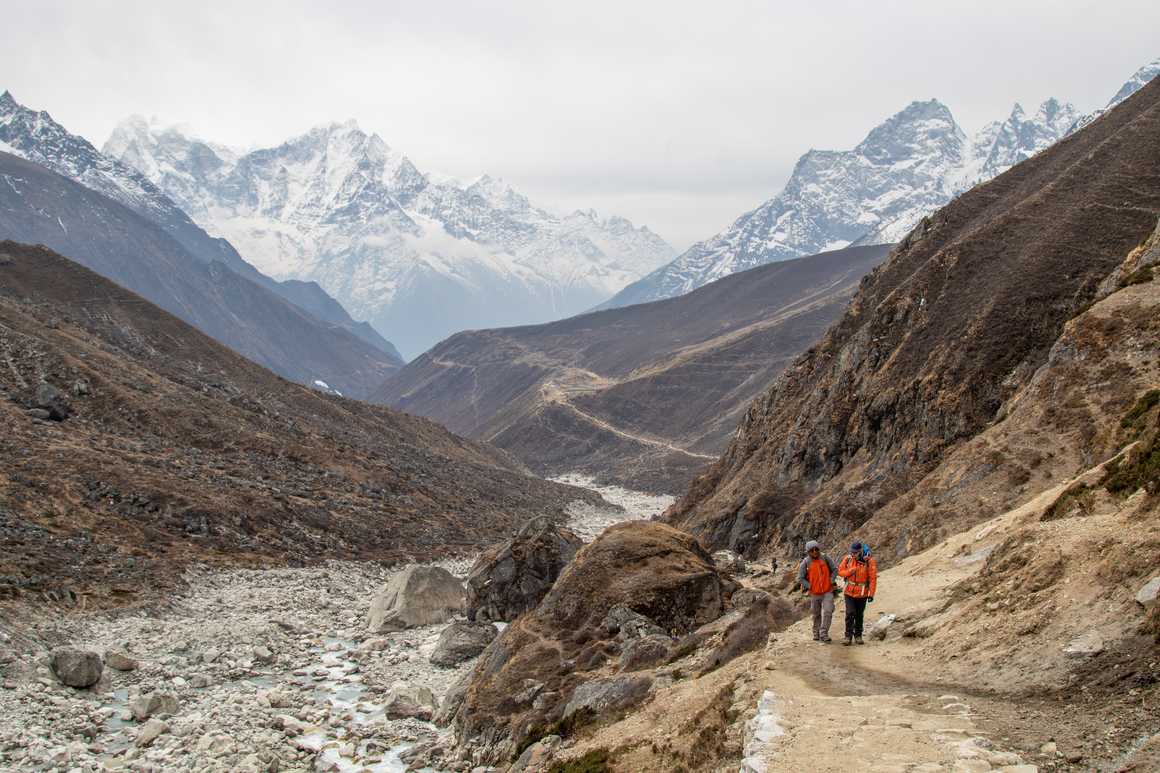
The Highest Point on Earth
The Sanskrit name Himalaya translates as snow (hima) abode (alaya) and with more than 110 peaks over 7300m it couldn’t be more accurate. Indeed, 8 of the 14 highest peaks in the world all over 8,000m are in the Nepal Himalayan Mountain range including the highest mountain peak in the world, Mount Everest. Standing majestically at 8,848.86m the summit of Everest is the highest point on earth and is increasing its elevation each year by 1cm due to the continued movement of the two landmasses.
Within the Himalayas, the snow line or zone of perpetual snow denoting the visible boundary between a snow covered and snow free surface sits at approximately 5,700m. It is within these higher elevations of the Himalayas, in the more remote areas, where snow leopards, Himalaya musk deer and brown bears can be spotted, as well as Tibetan yaks which are used as a beast of burden in Ladakh. With 3,411 named peaks in the Himalayas, many of them above the snow line in elevation, everyone who has experienced trekking and mountaineering in this jaw droppingly beautiful mountain region will have their favourites to ascend.
In this blog we’ll not only cover some of the epic mountaineering peaks but also the Himalayas more closely guarded secrets, the trekking routes which will unveil some of the world’s most breath-taking views and have you rubbing shoulders with giants. If you’re planning a trek or just looking for inspiration for future adventures, you might just find that unforgettable one to put on your favourites list.
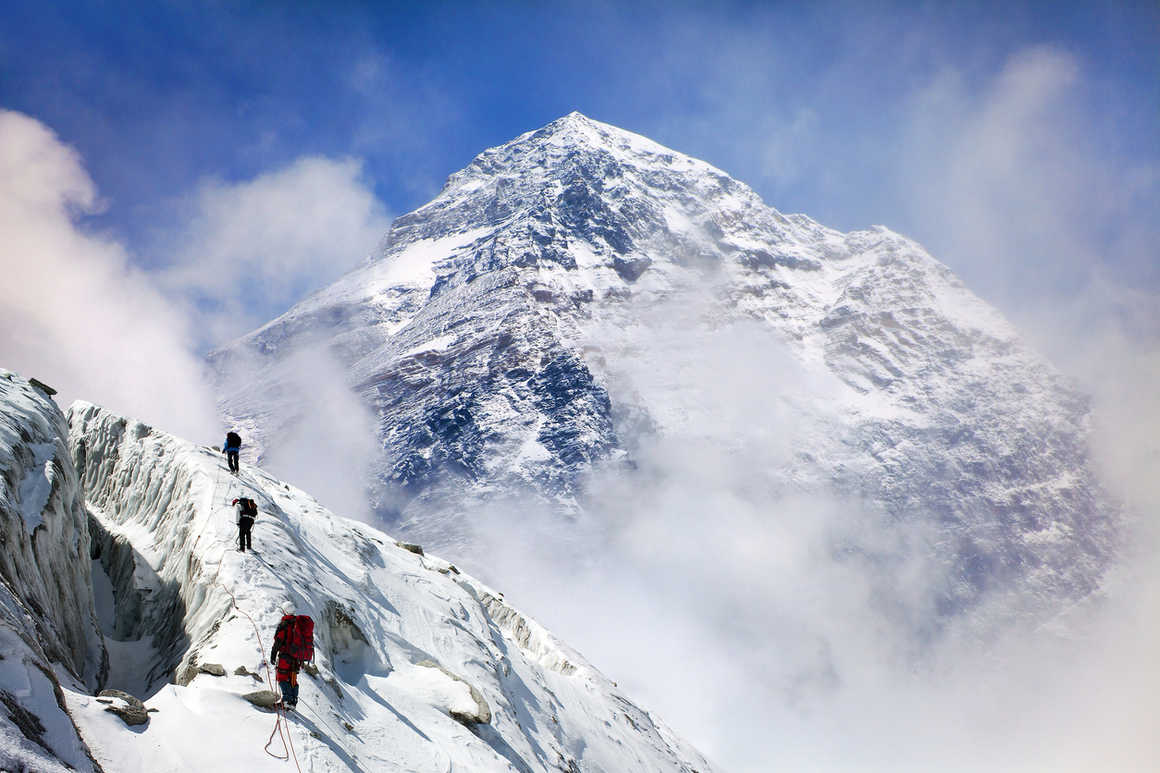
Bhutan - Gangkhar Puensum
There are many unclimbed mountains, sometimes known as virgin peaks in the world. This is usually due to their geographical locations, political instability in the region or religious beliefs of the country. Gangkhar Puensum meaning ‘Three Mountain Siblings’ holds the title of the highest mountain in Bhutan and the highest unclimbed mountain in the world, with a summit sitting at an elevation of 7570m. In Bhutan, the climbing of peaks above 6,000m has been prohibited since 1994 out of respect for spiritual beliefs. Prior to this date, four summit attempts of Gangkhar Puensum were made in 1985 and 1986 but failed.
Although climbing Gangkhar Puensum is not possible, the Snowman Trek to the remote Lunana district, considered the most difficult trek in Bhutan, will allow you to experience the unspoiled, breathtaking beauty of this country known as the ‘Land of the Thunder Dragon’. After submersing yourself in the Bhutan culture for 3 days, visiting The National Library housing ancient books and manuscripts from hundreds of years ago and the Institute for Zorig Chusum which offers a six-year course in 13 traditional arts and crafts to name but two, you begin your trek.
Climbing through thick subtropical forest to the village of Chamsa the trek is an intense undulating route of inclines and declines exchanging subtropical forests for rhododendron, finally reaching the hanging valley where yaks can often be found grazing. From here the altitude increases, pushing on over the mountain passes climbing above 5000m. The route takes you over Tsimola La Pass at 4700m revealing unforgettable views of Lunana, Mount Chomolhari and Mount Jichu Drake. From here the route continues to Narethang at 4900m and finally the highest point of the trek so far, Ganglakarchung La Pass at 5100m. From here the panorama of mountains peaks over 7000m really is something to behold, a truly unforgettable moment and this is only day 9 of the 25-day trek!
This incredible route continues over many passes and ridges with jaw dropping views, through stunning forests to tranquil lakes and flowing rivers all with a backdrop of beautiful mountains. We really can’t think of a reason not to experience the Snowman Trek.
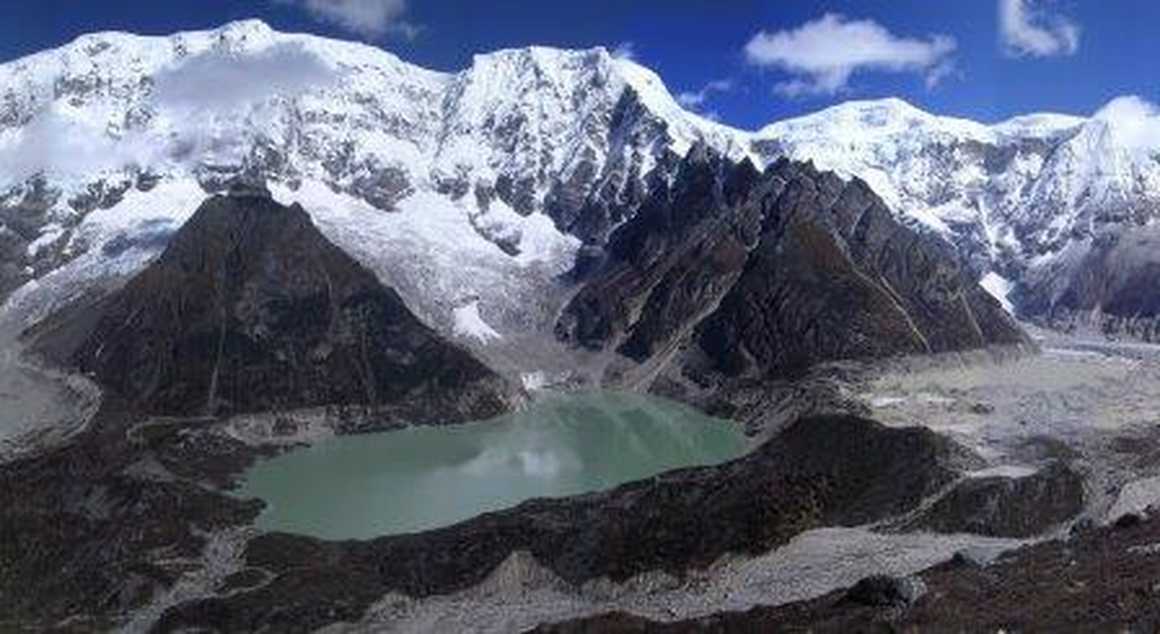
Bhutan - Chomolhari
Chomolhari Mountain, also known as Jomolhari, stands majestically at 7,326m in elevation and is located in Bhutan, a country largely unspoilt in its beauty due to its relative isolation. Chomolhari’s peak has only been summited six times, this is in part due to strong winds and the peaks technical difficulty but also access issues. Within Bhutan, no technical climbing has been permitted since 1994 and access from the Tibetan side is also not straight forward with some climbers experiencing difficulties obtaining permits. These challenges all add to the elusiveness and compelling draw of this breathtaking peak.
The mountain of Chomolhari is believed to be the home of one of the five Tsheringma Sisters, goddesses who were bound under oath to protect the land of Tibet and Bhutan. Although climbing the sacred mountain is prohibited in Bhutan, the Chomolhari trek to Chomolhari base camp is possible where you’ll stand in the shadows of the giant Chomolhari and Jichu Drake peaks.
Not only will you see incredible unspoilt landscapes, from treeless deep valleys, Rhododendron, juniper and mixed alpine forests, rocky cliff faces, waterfalls and stunning peaks while on the Chomolhari trek but also ruined fortresses and the spectacular Tiger’s Nest Monastery which really is a once in a lifetime experience.
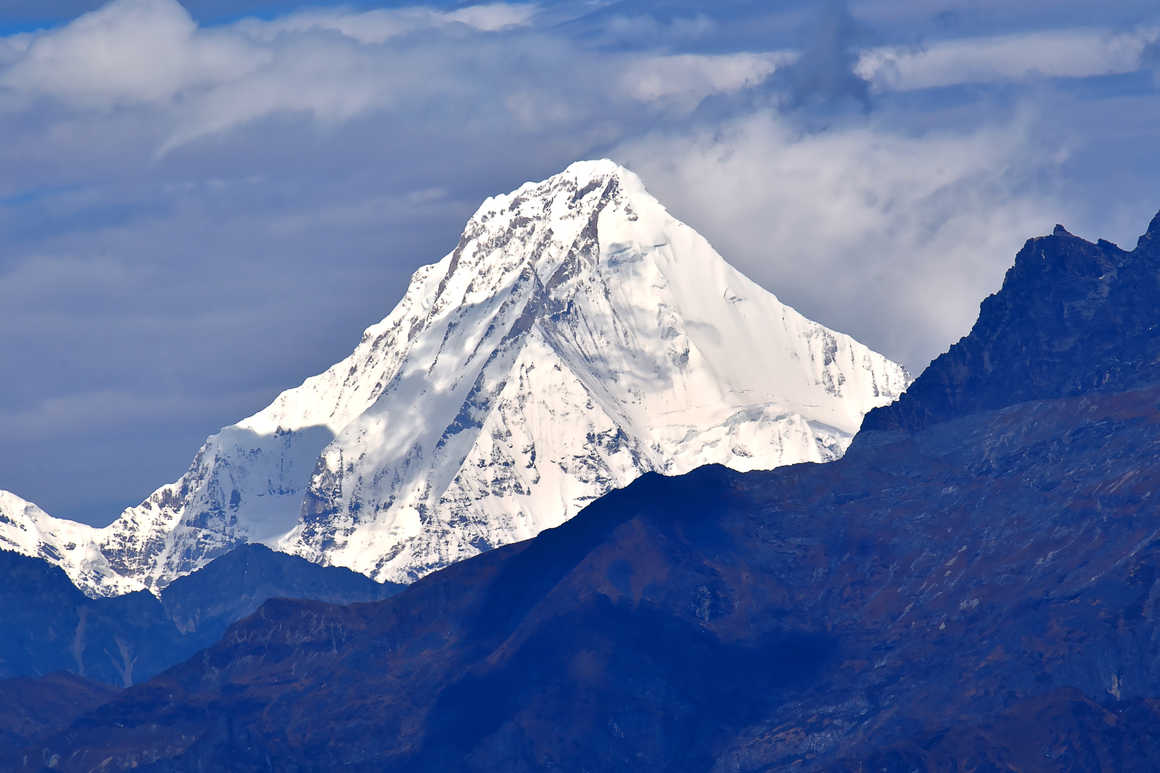
India - Kang Yatse II
Kang Yatse sometimes spelt Kang Yatze is located at the end of the Markha Valley in the Ladakh region of India. Interestingly, the Kang Yatse Mountain has two peaks, Kang Yatse II, the lower western peak, has an elevation of 6,200m and is more accessible than Kang Yatse I as technical mountaineering skills aren’t necessary in order to summit this peak. On the other hand, Kang Yatse I, the eastern peak with an elevation of 6,400m requires a high level of technical mountaineering experience and skill.
Thought of by some as the easiest of the 6,000m peaks, Kang Yatse II is a great peak for those trekkers wanting to gain experience at the higher elevations. Also being less crowded than Stok Kangri and others in the region you can really submerge yourself in the beauty and power of the surrounding environment. Taking the Markha Valley and Kang Yatse II Trek is a fantastic way to not only summit Kang Yatse II but also trek the remote, stunning Markha Valley.
Starting in the town of Leh within the Indus Valley, the wonderful culture of the Ladakh region can be fully experienced exploring the ancient monasteries and traditional villages in the shadow of towering mountains. The setting couldn’t be more breathtaking as you slowly make your way towards the awe-inspiring Kang Yatse Mountain. Your actual climb of Yatse II will be in stages from base camp to high camp and then on to the summit where your efforts are rewarded with jaw-dropping views of Zanskar, Stock and Karakoram massifs, they really are something to behold.
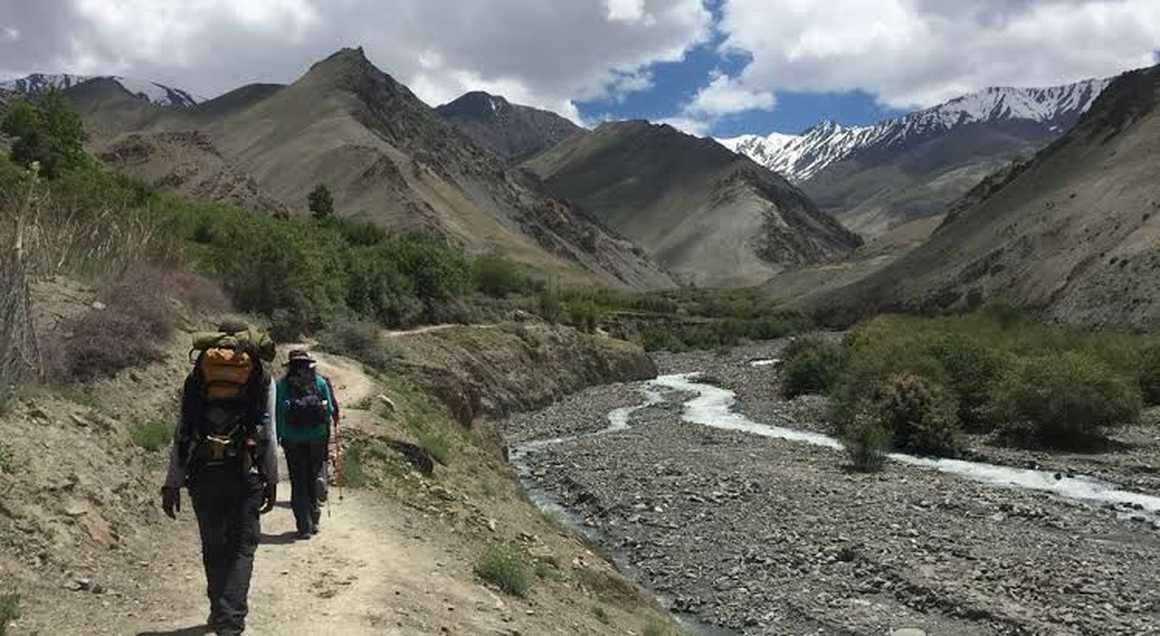
India - Kamet
Kamet, in the Zanskar range in the territory of Ladakh in India stands tall at 7756m and was the first summit over 7,620m to be climbed in 1931. It is worth noting that higher climbs had been achieved in the 1920’s on the north side of Mount Everest but weren’t summit climbs. Due to the remoteness of Kamet, accessing this majestic peak (the highest point in the Zanskar range) and its surrounding peaks of Mukut Parbat, Abi Gamin and Mana Peak is difficult.
Surrounded by glaciers, at dawn and dusk the suns golden rays are reflected by the copper-coloured rock of Kamet seemingly setting the hanging glaciers alite and giving the mountain a burning glow as if on fire. Some could argue that gazing upon a majestic peak can be equally as life changing an experience as summiting one.
The Indus Valley Trek in Ladakh will take you through the remote Sham Valley in the shadow of stunning peaks, their ochre and magenta striations a breathtaking site indeed but not only this you will also experience the glorious Changtang Lakes, local culture and ancient monasteries and when camping at the Yangthang village, settled amid the imposing Zanskar massif you may be lucky enough to witness some truly spectacular views as the mountains are bathed in the golden hues.
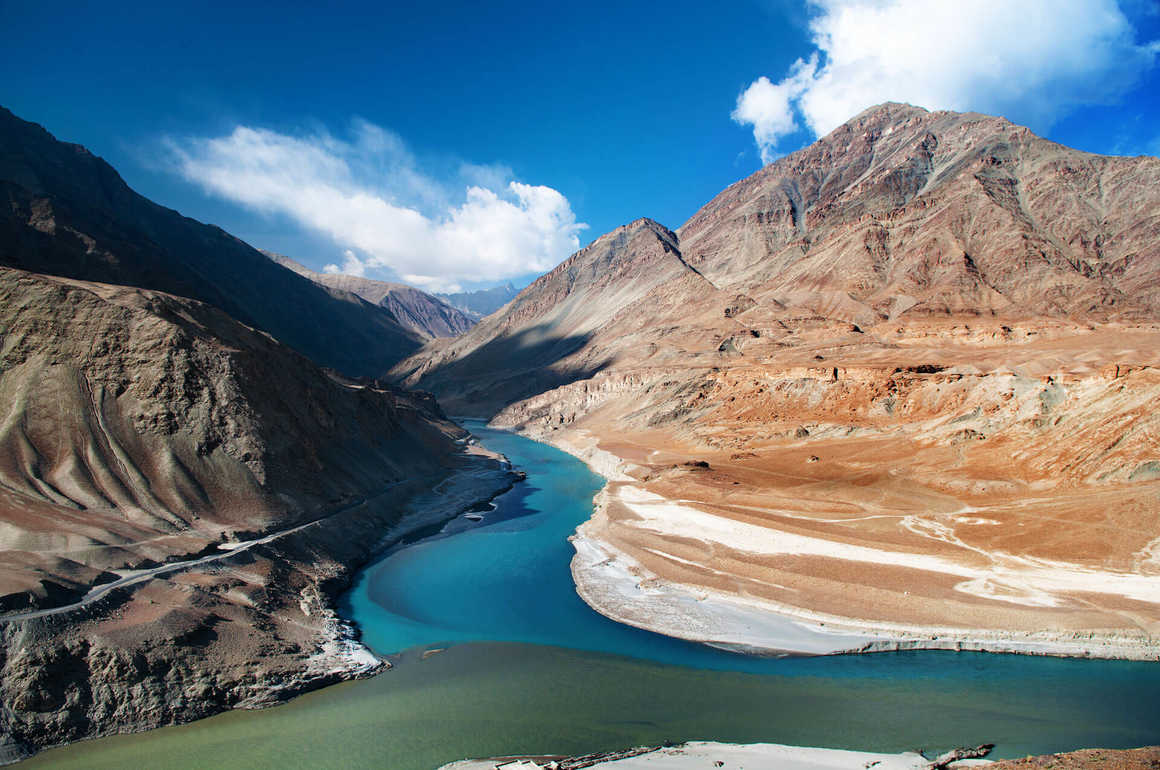
Nepal - Everest
On the border of Nepal and Tibet, Mount Everest, also known as Sagarmatha or Chomolungma is the highest mountain in the Himalayas and indeed the world standing commandingly at 8,848.86m high. It takes roughly six to nine weeks to climb Everest due to the acclimatisation of the high altitude and low oxygen levels with the actual summit windows roughly 7 to 10 days due to weather conditions. The Nepal Mountaineering Association (MNA) classifies ‘trekking peaks’ as those falling between 5,000m and 7,000m. With Everest’s peak at above 8,000m it is classed as mountaineering rather than trekking.
If you want the experience of Everest without embarking on the summit which requires an extremely high level of experience, then a trek to Everest base camp could be perfect for you. An iconic trek that begins with a flight from Kathmandu to Lukla landing on a steep mountain runway. The trek then starts heading up the Dudh Koshi Valley crossing numerous suspension bridges as you zig zag the river and finally enter the Sagarmatha National Park. Next is the steep ascent to Namche, glimpsing Mount Everest along the way if weather permits, and only day 3 of the trek!
By day 4 you will trek to 3880m to the Everest View Hotel and gaze upon Ama Dablam and Mount Everest. As you continue along the trail you have views of Everest, Lhotse, Nuptse and Ama Dablam. After several descent and ascents you finish day 7 with a view of Imja Valley and the incredible south face of Lhotse, certainly a view to remember. On day 8 you will be on a steep climb towards the foot of the Khumbu Glacier and onwards where you’ll reach many stone cairns, built as memorials to the Sherpas who have lost their lives on Mount Everest.
Following along the glacier, weaving between ice pinnacles and past crevasses the trek finally reaches base camp itself at 5364m. The final ascent is to the top of the Kala Pattar at 5554m for one of the best viewpoints in the Himalaya of Everest and the Khumbu icefield. From here you slowly descend over the next 3 days before flying from Lukla to Kathmandu on day 13 giving you time to explore the vibrant city before heading home after this incredible 15-day trek.
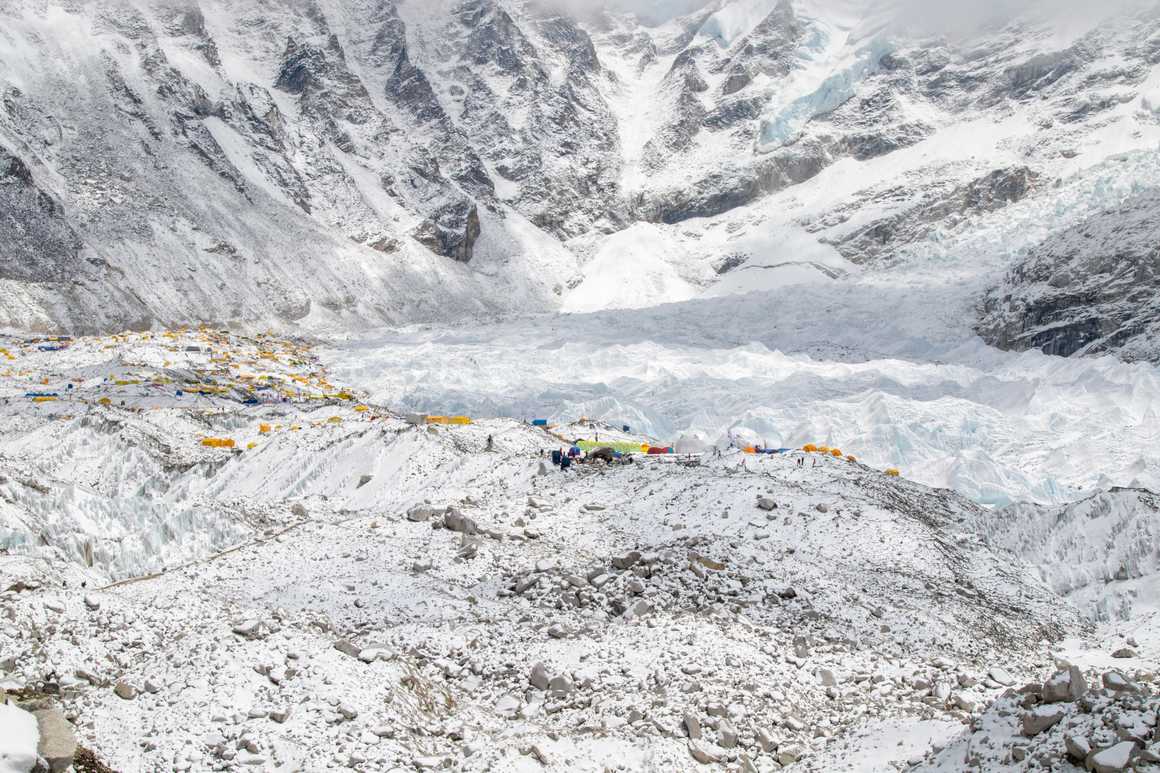
Nepal - Cho Oyu
Standing at 8,188m tall, Cho Oyu is the sixth highest mountain in the world and the second most climbed ‘eight thousander’ after Everest. Located 20km west of Everest, it has been referred to by some as the easiest 8000m peak due to the terrain however, a high level of fitness is required making this peak certainly not one to be taken lightly. The summitting of Cho You was first attempted in 1952, a climbing expedition by Edmund Hillary, Tome Bourdillon, George Lowe and led by Eric Shipton was organised and thought upon as preparation for their Everest summit attempt the following year.
If you would prefer to gaze upon the beauty of Cho Oyu rather than make a bid for its summit then, a Gokyo Lakes Trek could be just the ticket for you. Perfect for a more experienced trekker who is familiar with higher altitudes, your trek will begin with a flight from Kathmandu to the steep mountain runway of Lukla. Zigzagging the river on high suspension bridges you enter the Sagarmatha National Park and ascend to Namche hopefully catching a glimpse of Mount Everest. Namche Bazaar is a busy trading village and meeting place for Hindu traders and Tibetan yak caravans coming from the glaciated Nangpa La.
As with the Everest Base Camp trek you will continue to climb to the Everest View Hotel at 3880m for a spectacular view of Ama Dablam and Mount Everest. Day 5 will see you following the trail giving stunning views of Everest and Lhotse until the crossroads above the Dudh Koshi where you head towards Phortse Tenga. After Phortse Tenga comes a steep climb through rhododendron and birch forests which eventually give way to scrub juniper with the increase in altitude. This increased altitude also provides a breathtaking view of Cho Oyu, Kantega and Thamserku.
By day 7 you will reach Machermo at 4500m with, if you can believe it possible, an even better view of Cho Oyu and the mountains which hug the Ngozumpa Glacier. On day 8 you will follow the river down to the Gokyo lakes, the third of which offers a glorious reflection of Cho Oyu and Gyachung Kang giving a new take on the saying ‘mirror mirror on the wall, who is the fairest of them all?’ Day 9 sees you ascending Gokyo Ri, the tantalising glimpses of Everest, Lhotse and Makalu slowly coming into full view. From here the trail descends until finally joining up with the main Everest trail. With breathtaking mountain views and tranquil lakes, their waters emerald green in colour, we guarantee taking this less ventured path to Everest base camp will not disappoint.
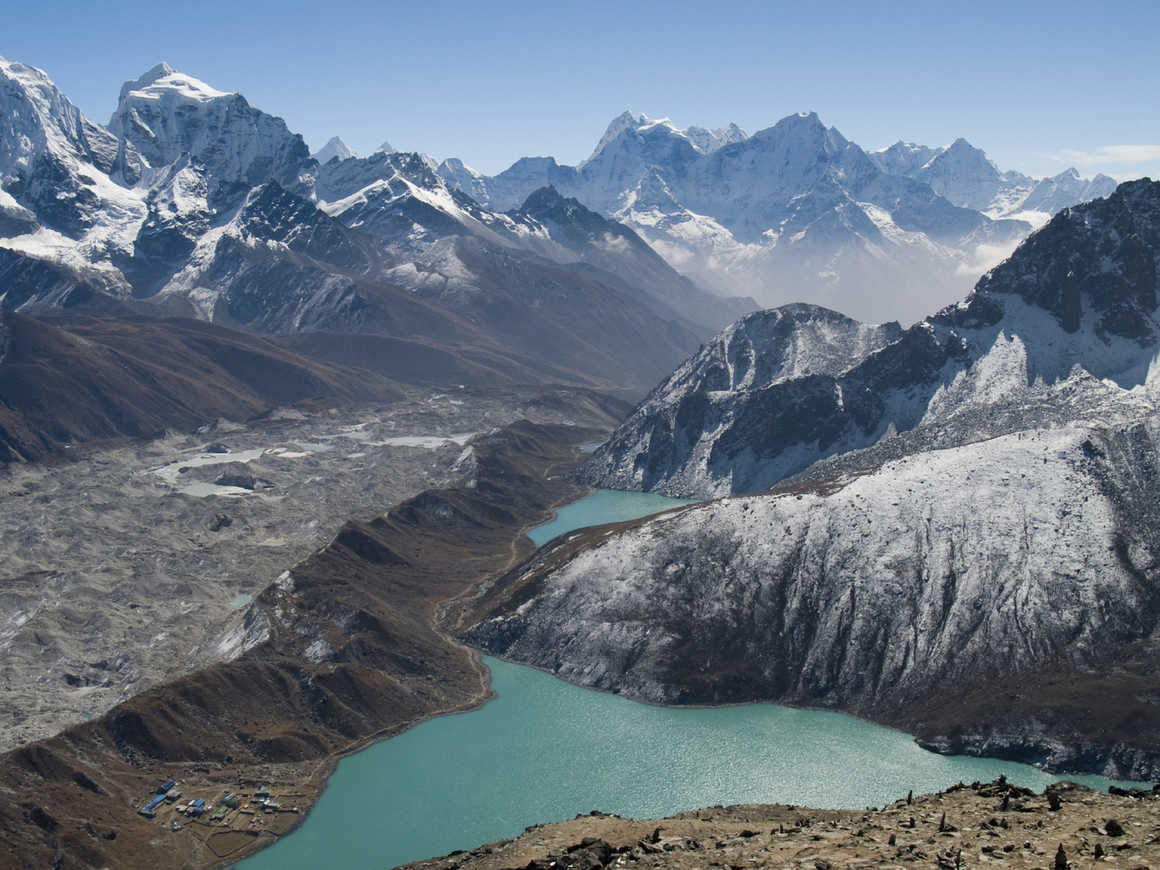
Nepal - Manaslu
Translating as Mountain of the Spirit, Manaslu stands tall at 8,163m, the eighth highest mountain in the world and situated in the Nepalese Himalayas. With long ridges that combine to form a towering peak, mountaineers can begin their climb from any direction but need to be wary of the false summit of Manaslu. Thought to have caught out many climbers who claim to have summited this giant but didn’t in fact ascend to the true summit, which is reached by a long, dangerous ridge from the false summit. Being classed as the fourth most dangerous 8000m peak, summitting Manaslu is one of the riskier climbs only to be undertaken by experienced mountaineers.
If rather than an expedition climbing to the peak you would prefer to trek to Manaslu base camp, then the Manaslu circuit trek with views of 9 glorious peaks over 6500m including Annapurna II is a trek not to be missed. A lesser-known circuit trek, this quieter route begins by trekking through rice paddies and rural villages in the low country before ascending a ridge above the rapids of Budhi Gandaki and dropping down to its banks. From here you once again ascend the rocky trail along the cliff side and up to Labishe at 880m. The trail, exposed and challenging in places, continues upstream to the Tatopani hot springs and on to the teahouse at Doan.
Day 6 of the trek sees you reach Saguleri, your reward, a stunning view of Singri Himal standing tall at 7187m. On day 7 you’ll begin to see Mani stones, these wayside rocks have prayers etched onto them and indicated a Buddhist region. By day 8 you will reach the Tibetan village of Sho and take in the beautiful sight of Manaslu before trekking to Lho village at 3150m. On day 10 the full majesty of Manaslu can be seen and a detour route taken to reach Manaslu Base Camp before rejoining the main path. Just when you think there can’t possibly be any more jaw dropping views, the trek continues along the Budhi Gandaki River surrounded, as if in an amphitheatre, by mountains standing tall and commanding over you.
As you continue you reach the Larkya Glacier and begin to climb to the Larkya pass where awe-inspiring views of Cho Danda, Annapurna II and Larkya Peak are waiting for you. From here the last remaining days of the trek will see you pass the villages of Tilje and Jagat and the municipality of Besishahar before your final drive back to Kathmandu. Crossing the remote Larkya La pass on the Manaslu circuit trek is exceptional, fully submerged in your surroundings and the magnificent views the Manaslu circuit trek is not to be missed.

Nepal - Annapurna I
Translated as ‘Goddess of the Harvests’ Annapurna I is a mountain in the Himalayan range of central Nepal and forms part of the Annapurna Mountain range also referred to as the Annapurna massif. With an elevation of 8,091m Annapurna I is the only peak in the massif above 8,000m and is the tenth highest mountain in the world. It also has the status as being the first peak over 8,000m to be conquered when in 1950 the expedition led by Maurice Herzog taking the north face route reached the summit.
Renowned by mountaineers for the difficultness of the extremely steep 3000m south face, the peak also plays host to unforeseeable weather and a significant avalanche danger making it extremely hazardous and only for the most experienced mountaineers. If this sounds like it might be a little too extreme for you, then the Annapurna Sanctuary Trek, a shorter trek which doesn’t require the same length of acclimatisation as some of the longer Nepal treks that are available, might be perfect.
The adventure starts with a flight from Kathmandu where you’ll be able to gaze down upon jaw dropping views of Dhaulagiri, Manaslu, Machhapuchhre and the five peaks of Annapurna to name just a few before touching down in Pokhara. The trek begins in Nayapul, following the river and passing through subtropical valley forests you will ascend to Tikhedhunga village. The next morning you’ll cross the deep gorge by suspension bridge and tackle the steep ascent to Ulleri. You’ll be rewarded for your efforts when following the trail you encounter rhododendron forests, majestic waterfalls and glimpses of Machhapuchhre on route to Ghorepani village where you’ll be greeted with awe-inspiring views of Dhaulagiri and the Annapurna range.
Day 4 sees you setting off before dawn to ascend to the summit of Poon Hill to take in the majestic views of the Annapurna range and the peaks of Dhaulagiri, Machhapuchhre (though to be the dwelling place of the Hindu god Shiva) and Nilgiri at sunrise witnessing the first light of the day set aglow the rugged peaks. After several further days of trekking, you’ll reach Machhapuchhre base camp and Annapurna base camp where you’ll find yourself in the magnificent amphitheatre that the Annapurna range forms with views of Annapurna I, Hiunchuli and Tharpu Chuli, also known as Tent Peak to name but a few. From here you’ll begin your descent back down the valley in sight of cascading waterfalls, trekking through the villages of Bamboo and Sinuwa to Chomrong and finally Nayapul before driving to Pokhara to catch your flight to Kathmandu, taking with you memories that will last a lifetime.
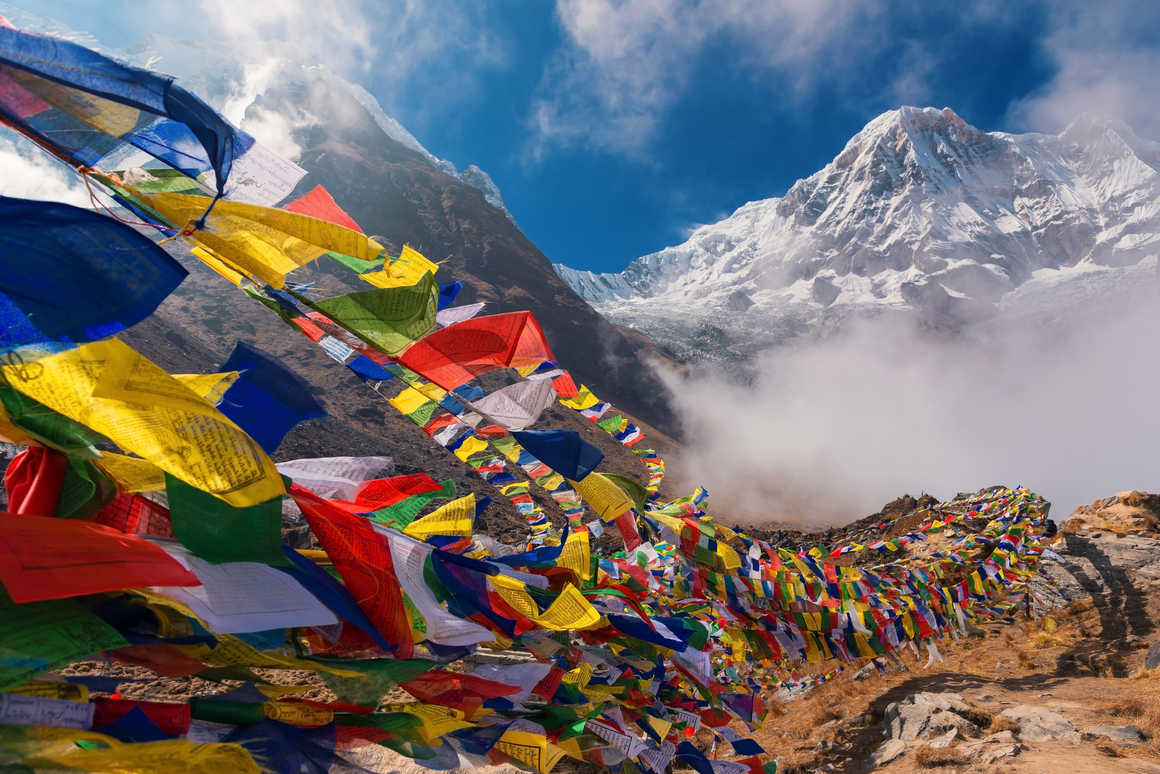
If these treks have piqued your interest why not contact the Kandoo team who’ll be able to advise on the trip of a lifetime.










